título: Neumusik - The Complete Edition
isbn: N/A
data: 2023
Capa:
NEUMUSIK
THE
COMPLETE EDITION
DAVID
ELLIOTT
Contracapa:
Neumusik
– The Complete Edition contains all six issues of the UK-based fanzine which
existed between 1979-82. The ‘zine focused on European, electronic and
experimental music which had come out of krautrock, French progressive rock and
the more esoteric side of British post-punk.
KORM
PLASTICS
Contents
/ Índice
Introduction
– 7
Neumusik
1 Nov 1979 – 9
Neumusik
2 March 1980 – 41
Neumusik
3 July 1980 – 103
Neumusik
4 Jan 1981 – 187
Neumusik
5 July 1981 – 257
Neumusik
6 April 1982 – 329
YHR
Cassettography – 411
Index –
416
Colofon
– 422
428
páginas
Introduction
Neumusik
fanzine
European,
electronic and experimental music
Between
1979 and 1982, I edited a UK-based fanzine called Neumusik about European,
electronic and experimental music. It was quite basic, put together with
staples, glue, love and innocence. There were only six issues but, aside from
the first, each one run to 60-80 pages. There were other ‘zines out there,
covering similar musics, some more sophisticated, some less so. But I was lucky
enough to be geographically very close to the ‘scene’ which at the time, for me
anyway, centred around West Germany and France. Indeed, I lived in Strasbourg
on the border between the two countries for some of that time.
This book contains all six issues, reproduced
as they originally looked, for better or worse. The writing is often naïve,
even embarrassing, mine included, but it was fun. Those were invigorating,
formative, creative times for me, and I look back on them with fondness.
Late
1970s / early 1980s Britain was awash with fanzines. Punk had been an
energy-force which urged, even incited, people to form bands – or if not form a
band, then to write about them. You didn’t have to be adept. Substitute guitar,
bass and drumkit with typewriter. Pritt stick and photocopy machine; add some
passion and attitude, and you were all set. Just do it, as Nike would later
say.
Most punk
‘zines were short-lived with tiny print-runs, but some went on to become quite
famous: Sniffin’ Glue, Ripped & Torn, In The City, 48 Thrills, London’s
Outrage etc.
It´s
often said that fanzines were the result of a perceived vacuum – that the
British music press wasn´t writing about punk. That might have been true in
1976, but by the following year they’d caught up – certainly Sounds and New
Musical Express had. Personally, I think it was less about a vacuum and more
about t he heady opportunity to express oneself, simply and immediately.
As a
schoolkid at the time, I was less into the music of punk, which was somehow
retro, sped-up rhythm and blues, but loved its irreverence and revolutionary
zeal. I was more into the weirder, more experimental scene which seemed to
follow in its wake – groups like Throbbing Gristle, Cabaret Voltaire, This
Heat, Suicide and The Residents. (Actually, these bands had formed in the early
70s, even if most of their debut releases coincided with punk). I was also into
Eno, Bowie and still some prog-rock, despite the latter being on the wane.
Seemingly overnight, schoolfriends were split into followers of old wave and
new wave and you were looked upon with suspicion if you liked both, which I
did. By the end of the decade, there was also the forward-looking synthpop of
Human League and OMD to appreciate.
But
actually, what I was particularly into at the time was krautrock – or to be
more accurate, ‘eurock’, as it was termed by a small coterie of fans. For me,
it stemmed from a fascination with continental Europe and its kind of
intoxicating ‘otherness’. As a child in the early 70s, it was Jeux Sans
Frontières and repeats of Belle and Sebastian on TV, Tintin and Asterix comic
books, and camping holidays in France. As a football fan, I loved the glamour
of European club matches: midweek evening games, Borussia Mönchengladbach,
Cruyff.
Then, as
I became a teenager in the mid-70s, krautrock bands like Tangerine Dream,
Kraftwerk, Klaus Schulze, Can, Faust, Neu!, Popol Vuh, Ash Ra Tempel, Cluster
and others began to vie for my attention, usurping the likes of King Crimson,
Yes and Pink Floyd. It was more of that ‘otherness’. Most people would say
that, like prog, krautrock’s heyday was the early 70s. That’s true, but I also
liked its later, less critically praised – even dismissed – era from say
1975-80. In part this is because it perfectly coincided with my teenage years,
the time when one’s musical education is at its most receptive, and partly
because the scene was becoming less trippy and more crafted, as well as taking
advantage of the leaps and bounds that electronic instrumentation had made. A
good example of the divide is that, whilst I loved Ash Ra Tempel, I preferred
Ashra’s New Age of Earth and Blackouts. And still do. I started getting into
French bands too: especially Heldon, but also Magma, Lard Free, Urban Sax,
Etron Fou Leloublan, ZNR, Bernard Szajner, etc.
Unlike punk and post-punk, German and French
new music really wasn´t covered by the British national music press. There
might be the occasional review (which I treasured, cut-out and stored), and you
might catch the odd track on John Peel (which I recorded on an old reel-to-reel
tape deck), but it was scant. And then there was the task of buying the records
once you were aware of them. It helped that Virgin, Island and United Artists
were releasing a few of the artists, but beyond that it meant tracking down
labels like Brain, Sky, Egg, Cobra, to name the better-known ones, through a
mysterious network of UK distributors and mail order companies like Making
Waves and Lotus Records.
But back
to the fanzines… In my last couple of years at school, I began to hunt for
‘zines which covered eurorock to a greater or lesser degree. Oddly enough, the
first one I stumbled upon was American, the appropriately named Eurock, which
had been around since 1974. It looked quite professional, borderline
fanzine/magazine, and had a bit of distribution in the UK, so I managed to get
hold of some back issues and make contact with its editor, Archie Peterson.
Next up
was Face Out and Aura, both debuting in 1978. These were classic British
fanzines: barely designed, roughly printed, the former with no pictures, just
dense utilitarian text. Face Out ran to eight issues. Aura four. But they were
treasure troves of information, including where you could buy the albums they
reviewed. I wrote to the editors and immersed myself in a whole new world of
alternative networks. They were what got me started on thinking of doing my own
fanzine.
In 1979 I came across French publication Atem,
probably trough its parallel record label which had recently started releasing
albums by Univers Zero and Art Zoyd. It was quite plush, more magazine than
fanzine, and balanced the French scene with a lot on British and American
alternative music. (Much later, in 2010, a book, Atem 1975-1979, collected
nearly 50 interviews from its pages, but only a few were with French artists).
From there I tracked down Dominique Grimaud’s Un Certain Rock (?) Français, a
two-volume compendium of French rock covering 1968-77, an era almost as defined
as krautrock’s heyday, but less well-known. Although its two glossy monochrome
covers hinted at a sophisticated graphic design inside, the page spreads were
actually a riot of fanzine cut’n’paste. It was kind of hard work, but if you
persisted, you’d be rewarded with a whole new world of music. (For some reason
I never met Grimaud, or Grimo as he was known, although I liked and reviewed
his later band Videó-Aventures). Oh, and I should also mention Impetus, a UK
‘zine which was a bit like Atem, or vice-versa. A kind of precursor to The
Wire.
In the
autumn of 1979, I left home for Sussex University. It was a cathartic first
term. The sense of freedom, free time and (in those lucky, far-off days) full
student grant allowed me to indulge in musical interests – rather more than
academic ones to be honest. So, in those first 10 weeks, inspired by all above,
I started a fanzine, which I called simply Neumusik. It had a tagline –
European, Experimental and Electronic Music – although I didn’t use it much. I
also hosted a campus radio show, again called Neumusik; formed a ‘group’, MFH,
with fellow student Andrew Cox, and a label, York House Recordings (YHR), to
release the weird bedroom doodling that resulted, as well as cassettes by other
artists.
Neumusik
lasted two and a half years and six issues, the last of which came out in April
1982. Apart from the first issue, the rest were quite substantial – between
60-80 pages. This sounds a bit mad for a fanzine but seemed totally logical at
the time. All six are reproduced in the following pages. A few of the photos in
#6 heve been corrected but otherwise they are as they were, warts and all. They
seem very amateur, almost quaint now. But they were enjoyable to do and began a
need in me to document stuff, cultural ephemera, in due course through
exhibitions and books. I’ve also added some words and pictures to introduce
each issue, continue the narrative and break up the page spreads.
A big
thank you to Frans de Waard for suggesting we do this book. It was a pleasant
surprise and an honour to collaborate. Also to designer Bertin van Vliet who
was done wonders transforming the poor originals into something readable.
Thanks
also to all those who contributed to Neumusik at thye time: to stalwarts
Wolfgang Fenchel and Gary Scott (40+ years later, I remain good friends with
both); in memorian to Andrew Cox, partner-in-crime at the beginning; and to all
those who penned articles or reviews: Jeaan-Baptiste Barrière, Philippe
Bouillin, Pascal Bussy, Jonathan Coleclough, Patrick Daniels, Steve and Alan
Freeman, Andy Garibaldi, Pierre Grimaud, Gordon Hope, Gunter Korber, Dave
Lawrence, Clive Littlewood, A Newton, Gerard Nguyen, Tim Owen, James T Parker,
Archie Patterson, Barry Pikesley, Colin Potter, Mark Shreeve, Jane Spooner,
Anthony Thomas, Mark Valentine, Kim Wood. And all those who gave time to be
interviewed.
And
finally, hats off to the editors of several other early 1980s likeminded
fanzines, which to a greater or a lesser extent, covered eurorock and the
experimental synth and industrial scene in UK and USA, Kudos to Martin Reed’s
Mirage (UK), Thom Holmes’s Recordings (USA), Gordon Hope’s Strange Sounds (UK),
Ian Dobson & Gordon Hope’s Flowmotion (UK), Bruno Chapoutot’s Notes
(France), Wybo Goslinga’s Sonic Report (Netherlands), Jarl-Hugo Lastad’s
Agitasjon (Norway), Alberto Crosta’s AND (Italy), John Loffink’s Surface Noise
(USA), Dennis & Jeanette Emsley’s Inkeys (UK) (which was actually a
cassette rather than a printed ‘zine), François Grapard’s Synthesis (France),
Andreas Müller’s Datenverabeiting (Germany), and last but definitely-not-least,
Steve and Alan Freeman’s phenomenally-enduring Audion started in 1986 and is
still going.

















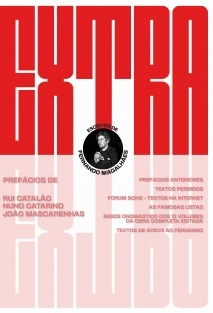
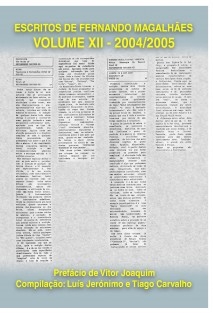
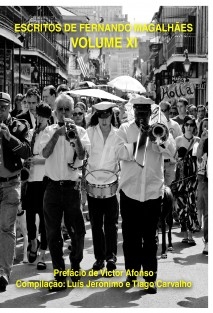



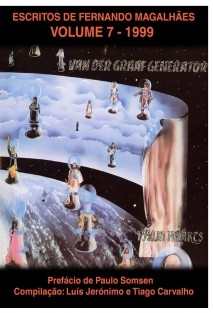
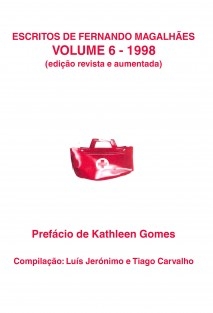
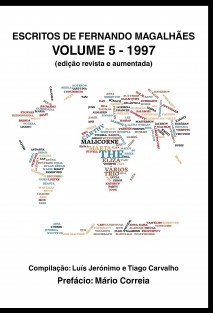
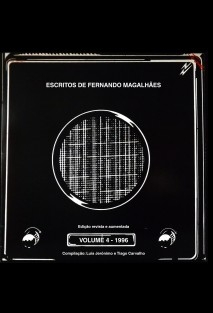
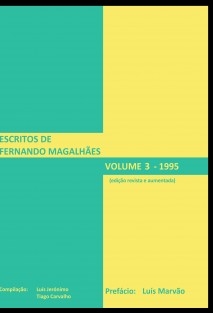
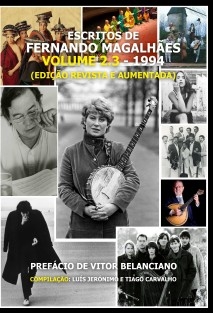
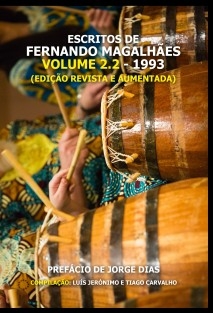
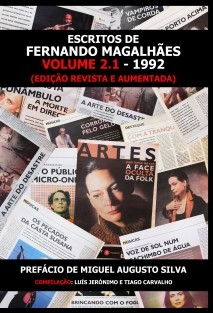
_Bubok.jpg)
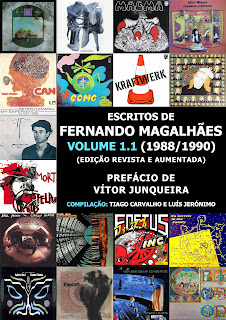





















Sem comentários:
Enviar um comentário